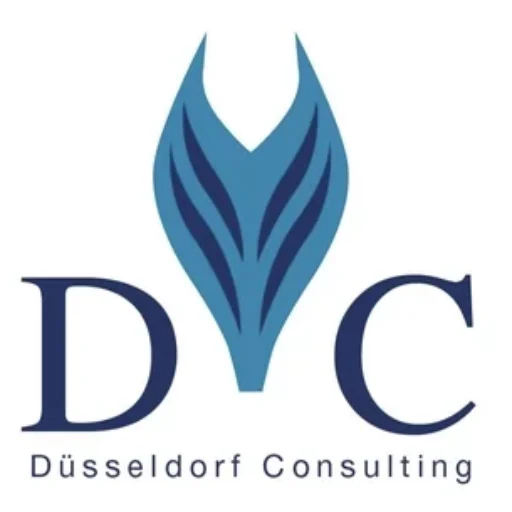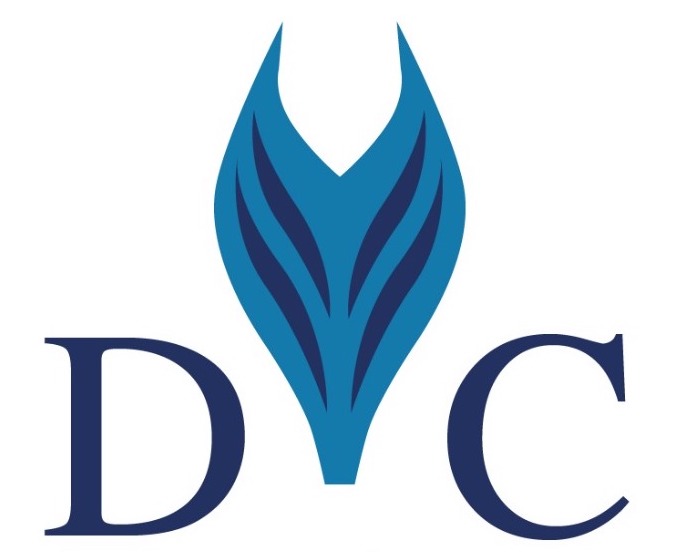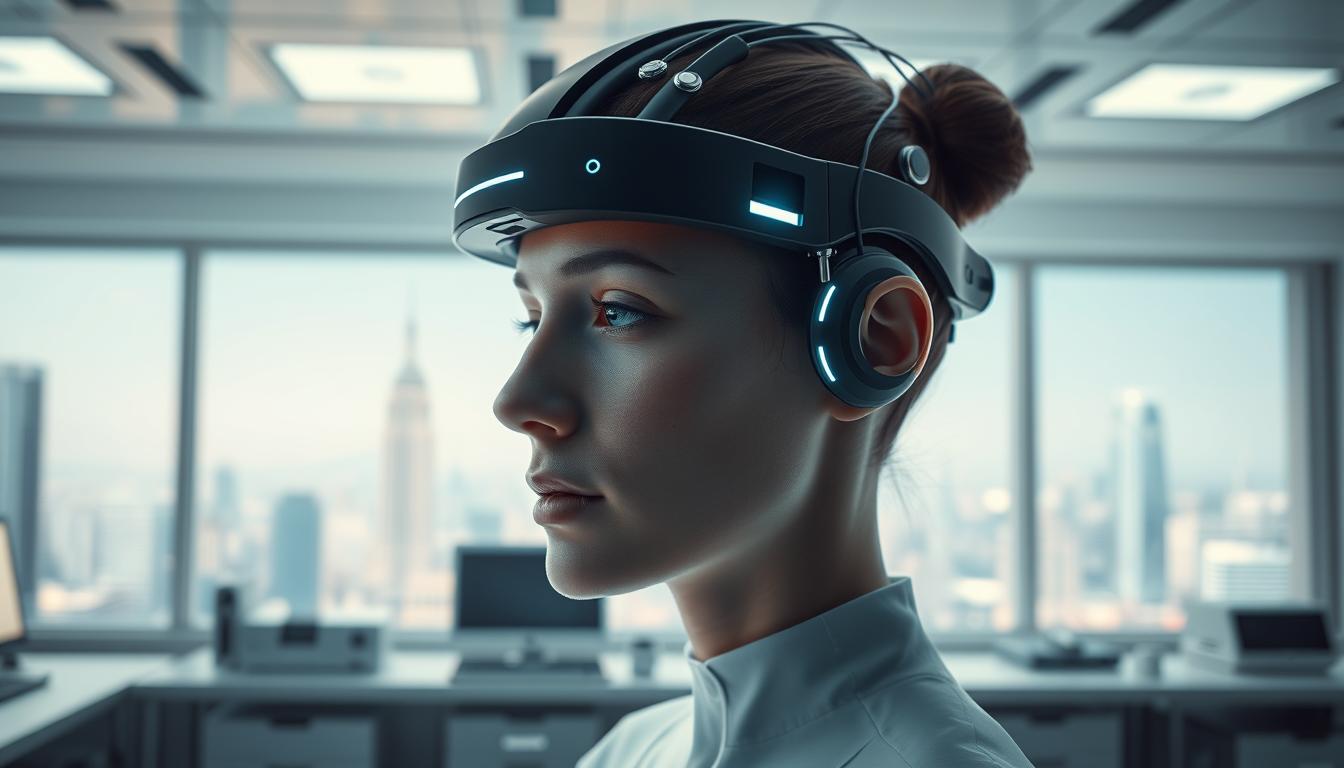The convergence of advancements in neurocognitive processes and decoding mental states from brain signals has led to a new era of neurotechnological applications. This tutorial is designed for BCI Developers in Germany, aiming to explore the potential of wearable neurotechnology.
The significance of neurotechnology products lies in their ability to revolutionize various aspects of life, from healthcare to entertainment. As BCI technology continues to evolve, it opens up new avenues for developers to create innovative solutions.
Key Takeaways
- Understanding the basics of wearable neurotechnology
- Exploring the potential applications of BCI technology
- Learning about the latest advancements in neurotechnology products
- Discovering the role of BCI Developers in Germany
- Gaining insights into the future of neurotechnological innovations
Overview of Wearable Neurotechnology in Germany
The integration of wearable neurotechnology in daily life is transforming the healthcare and gaming industries in Germany. Wearable neurotechnology encompasses a range of devices and systems that interact with the brain, enhancing or restoring cognitive functions. This technology has the potential to revolutionize various aspects of life, from medical treatment to entertainment.
Definition and Significance
Wearable neurotechnology includes brain-machine interface (BMI) devices and biofeedback technology, which enable users to control devices with their thoughts or monitor their brain activity. These technologies are significant because they offer new ways to diagnose and treat neurological disorders, enhance cognitive performance, and improve the quality of life for individuals with disabilities.
The significance of wearable neurotechnology lies in its potential to improve healthcare outcomes and enhance user experience in various applications. By providing real-time data on brain activity, these devices can help in the early detection of neurological conditions and offer personalized treatment options.
Current Market Trends
The wearable neurotechnology market in Germany is experiencing rapid growth, driven by advancements in sensor technology and increasing demand for neurotechnology products. The market is characterized by the presence of both established companies and innovative startups, all contributing to the development of cutting-edge neurotechnology solutions.
Current trends indicate a shift towards more user-friendly and non-invasive devices, making wearable neurotechnology more accessible to a broader audience. Additionally, there is a growing interest in integrating artificial intelligence (AI) with wearable neurotechnology to enhance device functionality and user experience.
Key Applications
Wearable neurotechnology has a wide range of applications, including:
- Healthcare and medical monitoring: Wearable devices can monitor patients’ neurological conditions, providing valuable data for diagnosis and treatment.
- Gaming and entertainment: Neurotechnology enhances gaming experiences by allowing players to control games with their thoughts.
- Assistive technologies for disabilities: Wearable neurotechnology can significantly improve the quality of life for individuals with disabilities by providing them with new ways to interact with their environment.
These applications demonstrate the versatility and potential of wearable neurotechnology to transform various aspects of life in Germany.
Brain-Computer Interface (BCI) Developers in Germany
As a hub for neurotechnology, Germany hosts a number of prominent BCI developers shaping the future of brain interfaces. The country’s strong presence in the BCI field is evident through its innovative companies, cutting-edge research institutions, and collaborative efforts.
Leading Companies in the BCI Field
Germany is home to several leading BCI companies that are driving advancements in the field. One such company is g.tec medical engineering GmbH, known for organizing events like the BCI & Neurotechnology Spring School, which fosters knowledge sharing and collaboration among BCI developers and researchers.
Other notable companies in Germany’s BCI landscape include those specializing in neurotechnology hardware and software. These companies are pushing the boundaries of what is possible with BCI technology, developing innovative solutions for various applications.
| Company | Specialization | Notable Achievements |
|---|---|---|
| g.tec medical engineering GmbH | BCI Technology | Organized BCI & Neurotechnology Spring School |
| Neuralink GmbH | Neurotechnology Implants | Advancements in implantable BCI devices |
| Brain Products GmbH | EEG and Neurofeedback Systems | Developed high-resolution EEG systems for research and clinical use |
Innovations and Breakthroughs
The BCI landscape in Germany is witnessing significant innovations, particularly in the development of more sophisticated brain interfaces. Cognitive computing developers are working on integrating AI with BCI technology to enhance the accuracy and functionality of brain-computer interactions.
“The integration of AI with BCI technology is revolutionizing the field, enabling more precise and efficient brain-computer interactions.” – Dr. [Name], Neuroscientist
Recent breakthroughs include the development of non-invasive BCI systems that can read brain signals with high precision, opening up new possibilities for applications in healthcare, gaming, and assistive technologies.
Collaborations with Research Institutions
Collaboration between BCI companies and research institutions is a key driver of innovation in Germany. These partnerships facilitate the translation of research findings into practical applications, accelerating the development of new BCI technologies.
Universities and research centers in Germany are working closely with industry players to advance the field. For instance, the collaboration between g.tec medical engineering GmbH and various research institutions has led to significant advancements in BCI technology.
These collaborations not only drive technological advancements but also foster a vibrant ecosystem that supports the growth of the BCI industry in Germany.
Regulatory Landscape for Neurotechnology
Germany’s neurotechnology sector is subject to a multifaceted regulatory framework that ensures safety and efficacy. As the industry continues to evolve, understanding these regulations is crucial for developers and manufacturers of neural interface systems and neurofeedback devices.
Relevant Regulations
The regulatory environment for neurotechnology in Germany is shaped by several key regulations. The Medical Device Regulation (MDR) is a significant piece of legislation that governs the development, marketing, and sale of medical devices, including certain neurotechnology products. Additionally, the General Data Protection Regulation (GDPR) plays a critical role in protecting user data, which is particularly sensitive in the context of neurotechnology.
As noted by a regulatory expert, “The intersection of neurotechnology and data protection law is a complex area that requires careful consideration.”
“The use of neurotechnology raises significant data protection concerns, as it often involves the collection of sensitive personal data.”
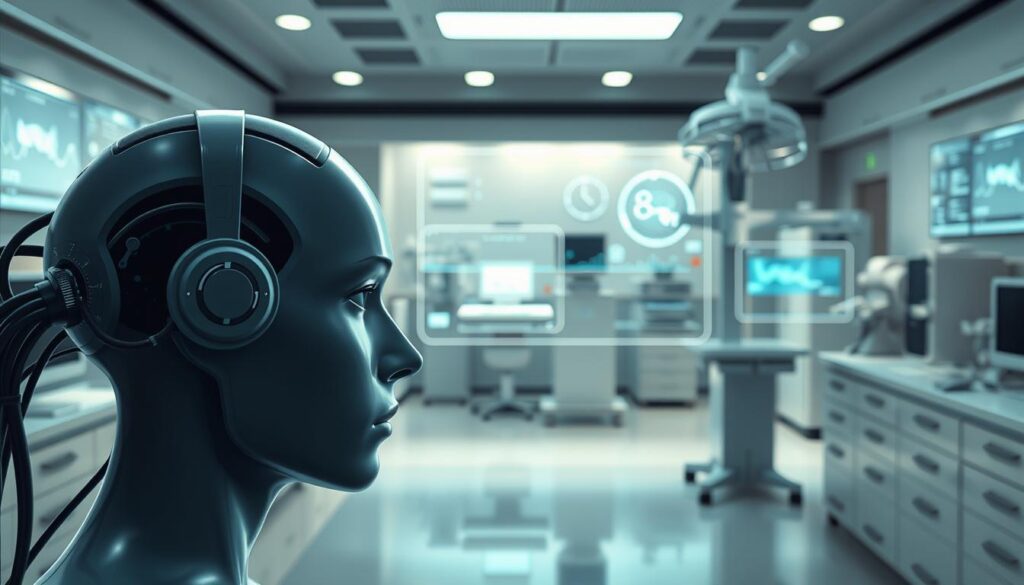
Compliance and Certification Processes
To market neurotechnology products in Germany, companies must comply with relevant regulations and obtain necessary certifications. This involves several steps, including:
- Conducting clinical trials to demonstrate safety and efficacy
- Obtaining CE marking for medical devices
- Implementing robust data protection measures
Compliance with these regulations not only ensures legal market access but also enhances consumer trust in neurotechnology products.
Impact on Development and Sales
The regulatory landscape has a significant impact on the development and sales of neurotechnology products in Germany. While stringent regulations can create barriers to entry, they also drive innovation by ensuring that products meet high standards of safety and efficacy. As the industry continues to evolve, it is likely that regulatory frameworks will adapt, potentially leading to new opportunities for companies that can navigate these changes effectively.
“The future of neurotechnology in Germany will be shaped by the ability of companies to comply with regulatory requirements while innovating and bringing new products to market.”
Key Players in the Wearable Neurotechnology Sector
Germany is home to a diverse range of companies and research institutions driving innovation in wearable neurotechnology. The sector is characterized by a mix of pioneering startups, established companies, and university spin-offs, all contributing to the development of advanced neurotechnology products and brain-machine interface devices.
Notable Startups to Watch
Several startups in Germany are making significant strides in wearable neurotechnology. For instance, companies like Neurable and Nextmind are developing innovative brain-computer interfaces that are changing the way we interact with technology.
- Neurable is working on non-invasive brain-computer interfaces for gaming and other applications.
- Nextmind is focused on developing wearable devices that enable users to control digital interfaces with their minds.
Established Companies Making an Impact
Established companies are also playing a crucial role in the advancement of wearable neurotechnology. Companies like Siemens Healthineers and Philips Healthcare are leveraging their expertise in healthcare technology to develop innovative neurotechnology products.
- Siemens Healthineers is developing advanced neuroimaging technologies.
- Philips Healthcare is working on wearable devices for neurological monitoring.
University Spin-offs and Research Initiatives
University spin-offs and research initiatives are another vital component of the wearable neurotechnology ecosystem in Germany. Institutions like the Technical University of Berlin and the University of Tübingen are at the forefront of neurotechnology research, giving rise to innovative startups and products.
The collaboration between academia and industry is fostering a vibrant ecosystem that is driving the future of wearable neurotechnology. As research continues to advance, we can expect to see even more innovative neurotechnology products and brain-machine interface devices emerging from Germany.
Applications of Wearable Neurotechnology
Wearable neurotechnology is revolutionizing various industries with its innovative applications. The integration of BCI technology and neural interface systems is opening new avenues for treatment, entertainment, and assistance.
Healthcare and Medical Monitoring
In the healthcare sector, wearable neurotechnology is being utilized for medical monitoring and treatment. Neurofeedback devices are used to help patients manage neurological disorders such as epilepsy and ADHD. These devices provide real-time feedback on brain activity, enabling patients to control their conditions more effectively.
| Application | Description | Benefits |
|---|---|---|
| Epilepsy Management | Neurofeedback devices monitor and control seizures | Reduced frequency of seizures |
| ADHD Treatment | Training programs using neurofeedback | Improved attention and focus |
Gaming and Entertainment
The gaming industry is also leveraging wearable neurotechnology to create more immersive experiences. BCI technology allows gamers to control games with their thoughts, enhancing the gaming experience.
Gaming companies are incorporating neural interface systems into their products, enabling players to interact with games in new and innovative ways.
Assistive Technologies for Disabilities
Wearable neurotechnology is also being used to develop assistive technologies for individuals with disabilities. Neural interface systems are being used to create devices that help individuals with paralysis or other motor disorders communicate and interact with their environment.
- Prosthetic limbs controlled by neural signals
- Communication devices for individuals with paralysis
- Wheelchairs controlled by brain signals
The applications of wearable neurotechnology are vast and continue to expand, transforming various aspects of our lives.
Challenges Facing Developers in the Neurotechnology Field
Neurotechnology developers in Germany must navigate a complex landscape of technical, ethical, and market-related challenges. The development of neurotechnological solutions, particularly brain interfaces and cognitive computing systems, is fraught with difficulties that can hinder innovation and adoption.
Technical Challenges
One of the primary challenges faced by developers is the technical complexity of creating reliable and efficient brain interfaces. This includes issues related to signal processing, sensor accuracy, and device compatibility.
- Signal Processing: Improving the accuracy and speed of signal processing algorithms is crucial for effective brain-computer interfaces.
- Sensor Accuracy: Enhancing the precision of sensors used in neurotechnological devices is vital for reliable data collection.
- Device Compatibility: Ensuring that neurotechnological devices are compatible with various systems and platforms is essential for widespread adoption.
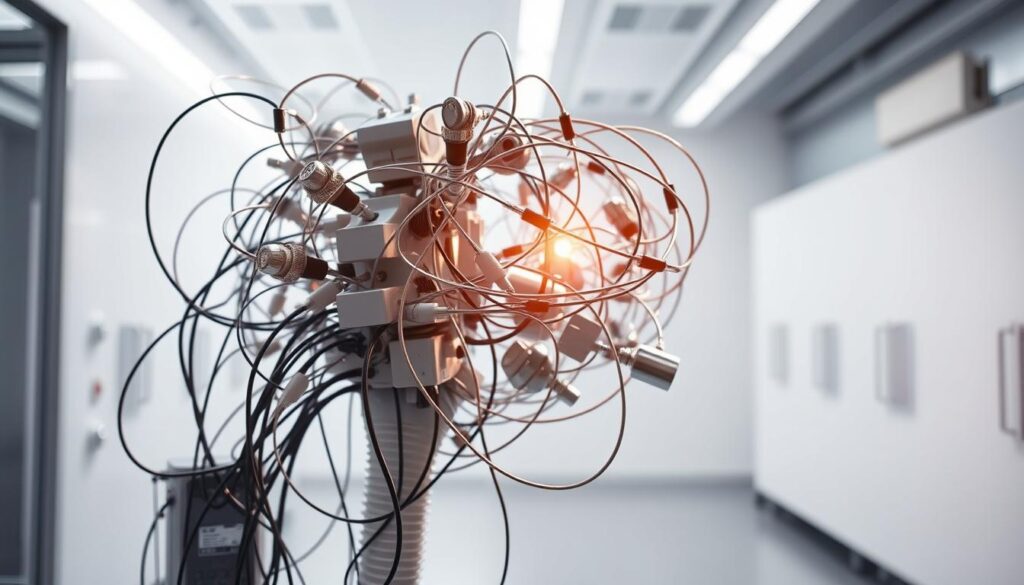
Ethical Considerations
Ethical considerations play a significant role in the development of neurotechnology. Developers must address concerns related to privacy, consent, and the potential misuse of neurotechnological devices.
For instance, ensuring the privacy of neural data and obtaining informed consent from users are critical ethical issues that must be addressed.
Market Acceptance and Training
Market acceptance is another significant challenge for neurotechnology developers. This involves not only educating potential users about the benefits of neurotechnological devices but also providing adequate training for effective use.
| Challenge | Description | Potential Solution |
|---|---|---|
| Technical Complexity | Difficulty in creating reliable brain interfaces | Advancements in signal processing and sensor technology |
| Ethical Concerns | Privacy and consent issues | Implementation of robust data protection policies |
| Market Acceptance | Difficulty in user adoption | User education and training programs |
In conclusion, developers in the neurotechnology field face a myriad of challenges that span technical, ethical, and market-related domains. Addressing these challenges is crucial for the advancement and adoption of neurotechnological solutions in Germany.
Future Trends in Wearable Neurotechnology
The future of wearable neurotechnology in Germany is poised for significant advancements, driven by innovations in sensor technology and artificial intelligence. As the industry continues to evolve, several key trends are expected to shape the landscape.
Advancements in Sensor Technology
One of the primary drivers of future trends in wearable neurotechnology is the advancement in sensor technology. Improved sensor accuracy and miniaturization are enabling the development of more sophisticated neurotechnology products. These advancements are crucial for enhancing the user experience and expanding the applications of wearable neurotechnology.
The integration of advanced sensors allows for more precise data collection, which is vital for applications such as healthcare monitoring and assistive technologies. For instance, electroencephalography (EEG) sensors are becoming more accurate and user-friendly, facilitating broader adoption.
Multi-functionality and User Experience
Another significant trend is the move towards multi-functionality in wearable neurotechnology devices. Future devices are likely to combine various functionalities, such as health monitoring, cognitive enhancement, and entertainment, into a single wearable device. This convergence is expected to enhance user experience and increase the appeal of wearable neurotechnology products.
To illustrate the potential of multi-functionality, consider the following table outlining the features of future wearable neurotechnology devices:
| Feature | Current Status | Future Development |
|---|---|---|
| Health Monitoring | Basic vital sign monitoring | Advanced health analytics and predictive care |
| Cognitive Enhancement | Limited cognitive training programs | Personalized cognitive enhancement and neurofeedback |
| Entertainment | Basic audio and visual interfaces | Immersive experiences with brain-computer interfaces |
Integration with Artificial Intelligence
The integration of artificial intelligence (AI) with wearable neurotechnology is set to revolutionize the field. AI algorithms can analyze data from wearable devices, providing insights into user behavior, health status, and cognitive function. This integration is expected to enable more personalized and effective applications of wearable neurotechnology.
For example, AI-powered analysis of EEG data can help in early detection of neurological disorders, offering a proactive approach to healthcare. The synergy between AI and wearable neurotechnology is poised to open new avenues for BCI technology and neurotechnology products.
Networking Opportunities and Events in Germany
Germany’s vibrant neurotechnology community is supported by a range of conferences, trade shows, and professional associations. These events and organizations provide valuable opportunities for networking, collaboration, and innovation in the field of wearable neurotechnology and brain-computer interfaces (BCIs).
Key Conferences and Trade Shows
Events like the BCI & Neurotechnology Spring School offer a platform for professionals to share knowledge and advancements in BCI technology. Other notable conferences include those focused on neuroprosthetics, neural engineering, and the application of BCIs in various fields. These events not only facilitate the exchange of ideas but also provide a glimpse into the latest developments in brain-machine interface devices and biofeedback technology.
Attendees can expect to learn about the latest research, network with peers, and discover new technologies and products. The conferences often feature keynote speakers from leading research institutions and companies in Germany, showcasing the country’s strong presence in the global neurotechnology landscape.
Professional Associations and Forums
In addition to conferences and trade shows, professional associations play a crucial role in supporting the neurotechnology community. These organizations often host workshops, seminars, and online forums where members can discuss challenges, share best practices, and collaborate on projects. Membership in these associations can be particularly beneficial for startups and researchers looking to stay updated on the latest developments and regulatory changes in the field.
By engaging with these networking opportunities, professionals in Germany’s wearable neurotechnology and BCI sectors can foster innovation, drive technological advancements, and contribute to the growth of the industry.
Funding and Investment Landscape
The development and commercialization of wearable neurotechnology and brain-computer interfaces (BCIs) in Germany rely heavily on a robust funding and investment landscape. Cognitive computing developers and neural interface systems require significant financial backing to bring their innovations to market.
Government Support
The German government provides various grants and support programs for neurotechnology projects, fostering a conducive environment for startups and established companies alike. These initiatives help drive innovation and accelerate the development of cutting-edge technologies.
Venture Capital Trends
Venture capital firms are increasingly investing in neurotechnology, recognizing the potential for high returns on investment. This trend is expected to continue, with a growing number of venture capitalists exploring opportunities in the field.
Crowdfunding Options
Crowdfunding has emerged as a viable alternative financing option for neurotechnology projects. Platforms that facilitate crowdfunding enable developers to raise capital from a large number of people, typically in exchange for rewards or equity.
FAQ
What is wearable neurotechnology, and how is it being used in Germany?
Wearable neurotechnology refers to devices that can be worn on the body to measure and analyze brain activity, often using techniques like electroencephalography (EEG). In Germany, wearable neurotechnology is being used in various fields, including healthcare, gaming, and assistive technologies, to improve lives and enhance user experiences.
What is Brain-Computer Interface (BCI) technology, and how does it work?
BCI technology enables people to control devices or communicate through their brain signals. It works by detecting and interpreting brain activity, often using EEG or other neural interface systems, and translating it into commands or actions.
Who are some of the leading BCI developers in Germany?
Some of the leading BCI developers in Germany include companies like Neurable, Brain Products, and g.tec medical engineering, which are known for their innovations in BCI technology and collaborations with research institutions.
What are some of the key applications of wearable neurotechnology in healthcare?
Wearable neurotechnology is being used in healthcare for medical monitoring, diagnosis, and treatment of neurological disorders, as well as for rehabilitation and cognitive training. It is also being used to develop new treatments and therapies, such as neurofeedback training.
What are the regulatory requirements for neurotechnology products in Germany?
Neurotechnology products in Germany are subject to regulations such as the Medical Device Regulation (MDR) and the General Data Protection Regulation (GDPR). Companies must comply with these regulations and obtain necessary certifications before bringing their products to market.
What are some of the challenges facing developers in the neurotechnology field?
Developers in the neurotechnology field face technical challenges, such as improving the accuracy and reliability of brain signal detection, as well as ethical considerations, such as ensuring user safety and data privacy. They also face challenges related to market acceptance and training.
What are some of the future trends in wearable neurotechnology?
Future trends in wearable neurotechnology include advancements in sensor technology, multi-functionality, and integration with artificial intelligence. These trends are expected to improve the performance and user experience of wearable neurotechnology devices.
What funding options are available for neurotechnology startups in Germany?
Neurotechnology startups in Germany can access various funding options, including government grants, venture capital, and crowdfunding. These funding options can help support the development and commercialization of neurotechnological innovations.
What networking opportunities are available for professionals in the wearable neurotechnology field in Germany?
Professionals in the wearable neurotechnology field in Germany can attend key conferences and trade shows, such as the Berlin Brain-Computer Interface Conference, and join professional associations, such as the International BCI Society, to network and stay updated on the latest developments in the field.
How is cognitive computing being used in BCI technology?
Cognitive computing is being used in BCI technology to improve the interpretation and analysis of brain signals, enabling more accurate and reliable control of devices. Cognitive computing developers are working on integrating AI and machine learning algorithms into BCI systems to enhance their performance.
